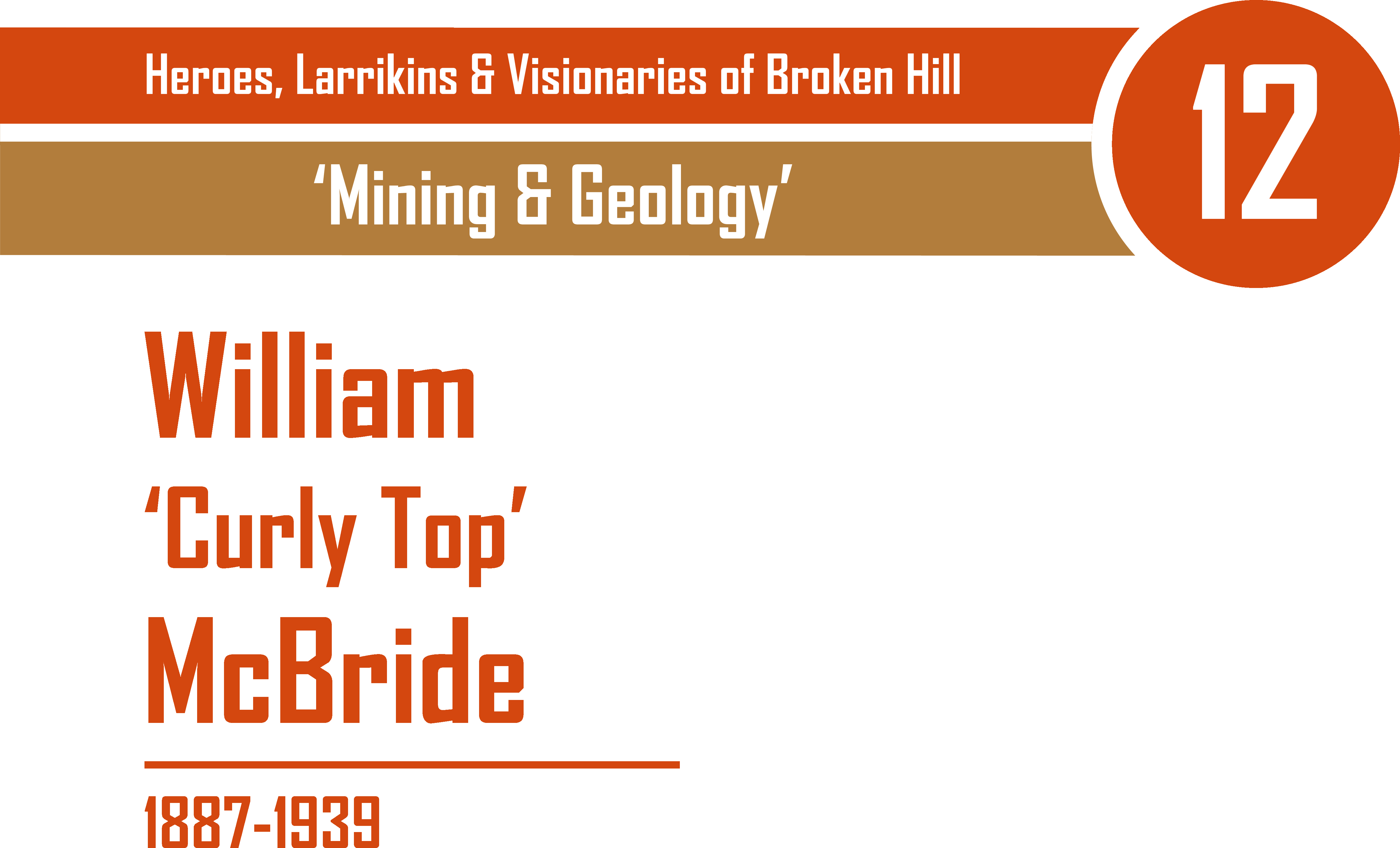William Curly Top McBride

William McBride stands out amongst the hundreds of miners who have been killed underground in Broken Hill and has become a local hero for the actions he took 30 metres down in the North Mine one earth-shaking day in 1939.
William McBride was known as ‘Curlytop’ because it was requisite to have a nickname if you were a Broken Hill miner. He’d been working in the mines since he was twenty-two, around the same age as his mining mate Leonard Eaton was in 1939.
This was a time when safety conditions underground were still questionable, in spite of four decades of strikes and union action against the mining corporations. To date, there have been more than 800 mining-related deaths in Far West NSW, hundreds of these beneath Broken Hill’s famous Line of Lode. Some miners’ bodies were never recovered.
On that day in 1939, McBride and Eaton were working together 30 metres below in the number 3 main level drive, North Broken Hill Mine, when the roof collapsed. This wasn’t unprecedented, given that the jackhammers used underground at that time were known as ‘widow-makers’. McBride struggled free from the earth and timber that came down on him, in spite of injuries that were later described as shocking. He crawled to where Eaton was trapped and was still trying to free him when rescuers arrived.
William McBride wouldn’t allow himself to be treated until the rescuers had freed his young mate from the fallen rocks, dirt and wooden beams that had partly buried them both. His now-legendary words were: ‘I’ve never felt better’.
He died of his untreated injuries the next day. Twenty-five-year-old Leonard Eaton survived after a long recovery. Each year there is a memorial service at the Miner’s Memorial in Broken Hill to honour and remember the fallen miners, the heroic William "Curly Top" McBride amongst them. The memorial is held in October to commemorate the tragic deaths of Leopold Campbell, 21, and Thomas Jordan, 19, who died on October 8 in the Central Mine in 1902 and whose bodies were never recovered.
Audio transcript available.